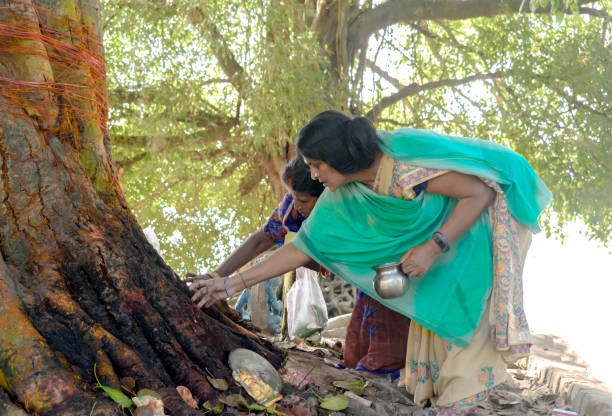Vedic Ecology and Sacred Trees ~ Harmony of Spirit and Science

Vedic Vision of Nature: The Divine in Every Element
The ancient Vedic seers didn’t merely observe nature, they communed with it. To them, every element was infused with divine presence. The Ṛgveda, one of the oldest spiritual texts of humanity, praises:
Agni (Fire) ~ the carrier of offerings and purifier
Vāyu (Wind) ~ the breath of life
Varuṇa (Waters) ~ the upholder of cosmic order
Pṛthvī (Earth) ~ the nurturing mother
Āditya (Sun) ~ the giver of light and consciousness
Soma (Moon) ~ the nourisher of mind and herbs
These were not primitive attempts to personify nature but expressions of a higher ecological wisdom. The Ṛgveda beautifully refers to Earth as “Viśvādhāyasī,” meaning “the one who bears all things.” This isn't just poetry, it’s early ecological consciousness, thousands of years before the word "ecology" was coined.
“In the roots of reverence lies the secret of sustainability.” ~ Adarsh Singh
Trees as Temples: Sacred Abodes of Life
In Vedic and later Hindu traditions, trees are not inert timber, they are living beings with prāṇa (life-force) and divine presence.
Among the most revered are:
Peepal (Ficus religiosa) ~ Associated with Lord Vishnu and the cycle of life
Banyan (Ficus benghalensis) ~ Symbol of immortality and shelter-giving strength
Tulsi (Ocimum sanctum) ~ Embodiment of Goddess Lakshmi and a medicinal powerhouse
These weren’t worshipped as superstition. They were honored to awaken respect, protection, and a sense of sacred duty toward nature.
“Reverence wasn’t a ritual, it was recognition. Recognition that we are not above nature, but within her.” ~ Adarsh Singh
Spirituality Meets Science: Oxygen & Ecological Benefits
Modern science now validates what the Vedic tradition intuitively knew. These sacred trees are ecological marvels:
Peepal Tree
One of the rare trees that release oxygen even at night through CAM (Crassulacean Acid Metabolism) photosynthesis
Absorbs carbon dioxide and purifies air pollutants
Used in Ayurveda for treating asthma, skin disorders, and diabetes
Banyan Tree
Offers shade to entire ecosystems ~ birds, insects, and animals
Its aerial roots bind soil and prevent erosion
Filters pollutants and improves air quality
Tulsi Plant
Emits ozone and antibacterial agents
Known as “Queen of Herbs” in Ayurveda for its healing properties
Acts as a natural insect repellent and strengthens immunity
“When a culture bows before a tree, it rises in its soul.” ~ Adarsh Singh
Eco-Dharma: Duty Towards Nature
The Sanātana Dharma, often translated as Hinduism, doesn’t separate spiritual practice from environmental responsibility. The concept of “Dharma” includes duty towards all living beings.
Yajñas (fire rituals) were originally designed to maintain ecological balance, not pollute the environment.
Planting trees was a punya karma (meritorious act).
Cutting down sacred trees without reason was a pāpa (sin).
The Atharvaveda even contains hymns to forests, herbs, and rivers, acknowledging them as partners in life, not resources to exploit.
Message for the Modern Age
In today’s world of climate change, deforestation, and ecological collapse, Vedic wisdom offers us a timeless compass:
See nature as divine
Protect what you revere
Live in alignment, not dominance
The solution is not new policies alone, it is a new perception, or rather, the restoration of an ancient one.
“Let our rituals return to meaning, our science return to wisdom, and our life return to balance.” ~ Adarsh Singh
Returning to Sacred Ecology
The Peepal, the Banyan, the Tulsi, they are not just part of religious iconography. They are living testaments of a civilization that knew how to blend the seen and unseen, the sacred and the scientific, the mystical and the material.
In bowing before these trees, we don’t degrade ourselves, we elevate our consciousness. For in that bow lies a humble admission:
We are not the masters of this Earth, we are its children.
“Vedic ecology is not about worshipping nature, it is about becoming worthy of coexisting with it. In sacred trees, we don’t find gods, we find ourselves.” ~ Adarsh Singh
Mon Jul 21, 2025
